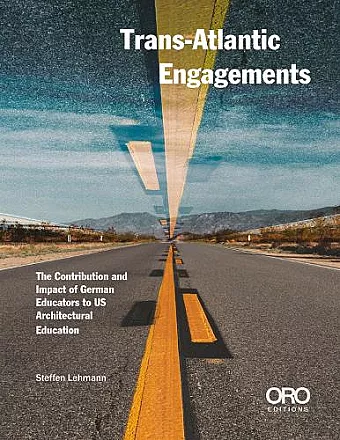Trans-Atlantic Engagements
The Contribution and Impact of German Educators to US Architectural Education
Steffen Lehmann author Dr Alexander Eisenschmidt author Peter Bosselmann author
Format:Paperback
Publisher:Oro Editions
Published:17th Mar '21
Should be back in stock very soon

This book takes a critical look at the influence of German educators. It is a publication that explores the history of pedagogical concepts of German-born professors of architecture at schools in the United States. The research and book publication are structured in three parts; it aims to make a significant contribution to the understanding of architectural education in the United States and its historical cross-fertilisation with German educational concepts at large, with research outcomes responding directly to current and future educational and societal challenges.
The ideals of the Bauhaus school shaped more than just design and architecture around the world; these guiding principles and pedagogy also transformed teaching. The project examines the post-Bauhaus influence on these German-born educators today and how the Bauhaus model has evolved over the last 50 years. There are currently over 30 German-born educators, active in shaping architectural and design education in the US, influencing thousands of students as the next generation of future architects in this country. Compared to other professions, succeeding in studies of architecture is known as a long endeavor that requires a strong commitment and dedication from the student. The task for the educators is to shape the next generation of architects as well as possible and, at the same time, turn it into a positive experience and fun to be part of this demanding profession. The book features interviews (conversations) with selected professors and explores how the Bauhaus legacy of Gropius and Mies van der Rohe is still relevant for their educational strategies and design teaching today.
The Bauhaus aimed to unite all creative arts through direct field and workshop experience in the crafts with a concentration on modern materials, industrial techniques and mass production. It was initially a school of design which included architecture, and not a school of architecture per se. Gropius resigned in 1928, and it was largely under the directorship of Ludwig Mies van der Rohe from 1930 to 1933 that the Bauhaus developed into a school of architecture with subsidiary art and workshop departments.
The pedagogical experiments of the Bauhaus, imported by Gropius, Mies, Hilberseimer, Albers and others to the US system, challenged traditional Beaux-Arts thinking and played a...
ISBN: 9781951541484
Dimensions: unknown
Weight: 608g
240 pages